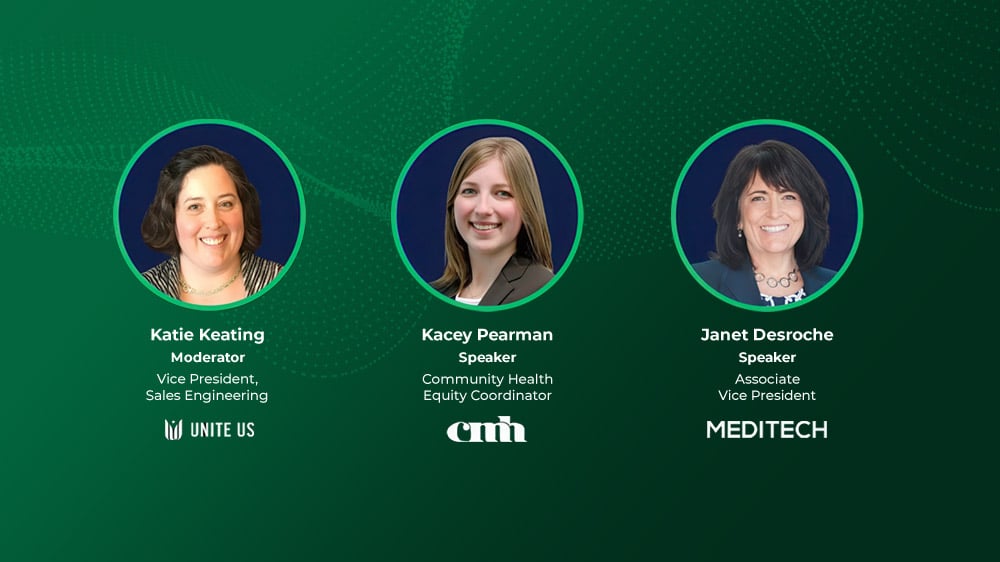
There are distressing similarities between what the United States faced with HIV/AIDS in the 1980’s and the current opioid epidemic. Most people have a personal story related to the harm that can be associated with opioids. The numbers of opioid deaths and people suffering from substance use disorder has reached staggering numbers.
Though it may seem like a tall hill to climb, there are many smart and influential people working hard to address the issues from multiple fronts, lift the stigma, and put improvements in place. Activity worth noting include the following:
- The U.S. omnibus spending bill, that was passed in March, included $4 billion in spending to address the opioid crisis.
- All the key federal agencies under Health and Human Services (CDC, NIH, FDA, SAMSHA) are mobilized.
- Both the Senate and House are actively working on numerous bills that will direct actions related to preventing and treating opioid addiction.
Those of us who have spent our careers in EHR development and implementation know that there is profound capacity for the EHR to enable solutions. An EHR provides a powerful set of tools that can operationalize interventions in a multitude of stakeholder workflows and EHR interaction experiences, that integrate best practices and decision support based on recommended guidelines, such as those that were published by the CDC in March of 2016 for managing chronic pain.
We are at an exciting point in the EHR industry, with leaders from healthcare organizations, EHR companies, and other stakeholder groups coming together as a single collective voice to make recommendations and influence change. I am privileged to be working with a number of groups, including CHIME. The CHIME opioid task force was launched in January of this year with a meeting in Washington, D.C. A personal story from one of the CHIME leaders has helped drive the mission of this group and made the journey we are embarking on that more meaningful. This isn’t just an epidemic - it is personal!
One of the pre-requisites for the CHIME opioid task force meeting was to read “Dreamland – The True Tale of America’s Opiate Epidemic” by Sam Quinones. The book is a moving narrative of the history of opioids and factors (particularly acute in the United States) that led to the opioid crisis. From the discovery of morphine in the early 1800’s, the author highlights the transition of prescription opioids from being used for cancer patients to wider use for other types of pain and the promotion of opioids as non-addictive in the 1980’s. An appreciation is gained, through this book, of the complex and intertwined events that have resulted in the destruction of so many lives. Understanding the factors that led to the crisis is helpful as we look at solutions.
The initial meeting of our task force was moving as people shared personal stories on how the opioid crisis has affected their loved ones. It were these experiences that drove and inspired the CHIME leadership and task force members to get involved and influence not only the policy makers, but healthcare organizations as well as vendors to help effect change.
The CHIME opioid task force is broken down into subcommittees which are focusing on several key areas. My subcommittee centers around the ability to determine vendor readiness, technology options, data sharing, and common alerts in healthcare technology. As part of a group of clinical and non clinical individuals that all serve in a senior capacity for healthcare consulting firms, healthcare IT security, hospitals, behavioral health organizations, and EHR companies, our group focuses on clinical workflow and how we can integrate solutions into the EHR that will support best practices.
Along with the commitment as to what we could do in our respective leadership roles and technical roles, we also made a personal commitment to leverage our roles and talents to make a difference. To date, a lot has been accomplished in terms of workflow analysis and optimization, as well as review and input on pending legislation that would remove obstacles and/or improve our ability to leverage best practices within the EHR.
Quite a bit of work has already been done with regard to interoperability, and prescription drug monitoring systems per state, which is a terrific start, but there is definitely more that we hope to accomplish.
MEDITECH is leading the way when it comes to tackling the opioid crisis. We’re driving best practices for enterprise health records around reducing unnecessary opioid prescriptions, pain management protocols, access to prescription drug monitoring program databases, and so on.
We’ve also worked very diligently on integrating the electronic prescribing of controlled substances into our workflow, as well as the links to the PDMP. As the barriers disintegrate regarding data sharing across states, we’ll be able to more easily integrate that data too.
With regard to the CDC recommendations relative to the management of chronic pain, there are many functionality components within the MEDITECH system right now that meet those recommendations. We’re also working with our physician team to seamlessly implement these practices into the physician’s workflow to assist with managing opioid prescriptions, better managing pain, and to individualize the treatment for the patient. MEDITECH is also in the process of developing an opioid management toolkit that will further integrate those CDC recommendations in a sophisticated way, and will allow end users to stay abreast of emerging best practices, evidence surrounding pain management pathways, and key analytics that our customers can put into their workflow as well as their own opioid stewardship programs.
One of the keys to tackling this epidemic is to examine a patient’s risk.There are committee hearings that are happening at the federal level that are tied to national goals regarding making interoperability easier so that the providers can get access to the patient's history, as well as the prescribers history of prescribing controlled substances more seamlessly in their workflow. If you look at prescribing opioids for acute pain, prescribing them for surgical patients, and then prescribing them for chronic pain management, without taking into consideration all the other issues having to do with managing substance use disorders, herein lies the problem.
The opioid epidemic isn’t a battle that will be won overnight, but through these task forces, legislation, and strategic partnerships, we’re slowly but surely closing the chapter on this dreadful crisis.
In an effort to help combat this epidemic, please consider dropping off medications you no longer need on National Prescription Drug Take Back Day on Saturday, April 28.
Enjoyed reading this blog? Click below to read why Dr. Bryan Bagdasian believes doctors are the key to the opioid crisis.



.jpg)
